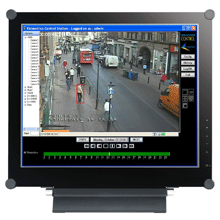 |
| The metadata extracted from the video as it is being recorded is used by FiND for creation of database |
Leading CCTV storage systems manufacturer, Visimetrics (UK) Ltd, will be launching the result of a £1M research and development project at IFSEC this year. FiND will significantly reduce the search time of large periods of CCTV recordings for key points of evidence. The R&D project team includes the DTI's Technology Strategy Board, Loughborough University, PERA and Visimetrics.
Craig Howie, Commercial Director of Visimetrics, says, "Following the London bombings in July 2005, the Metropolitan Police Service reviewed over 100,000 hours of CCTV footage as part of their incident investigation. This process consumed a huge amount of operational man hours and significantly increased the amount of time required to progress the investigation. The issues faced by the police in this instance inspired a technical solution to significantly reduce the time, man power resources, (and costs) needed to review large amounts of CCTV recordings while searching for key points of evidence."
"FiND - Forensic investigation Network Database - has been developed with the capability of linking to any CCTV recording system to create and index key objects of interest at the time of video capture and storage. The technology works by allowing operators to search via a powerful 'FiND' processing engine that immediately identifies relevant footage. By inputting key parameters, the system will search the database of classified objects and display relevant images using thumbnail identification, ready for review. The speed of response is derived from searching the object data index, rather than the traditional video based 'region of interest' search, using selected areas of a specific camera."
"FiND will reduce the search period of days, weeks - or months - worth of digitally recorded video down to a matter of seconds..." |
FiND emerged from initial research undertaken by Loughborough University evaluating the most technically challenging aspects of using automated video analysis to search large volumes of existing CCTV recordings for key or 'known' objects of interest. Performing complex video analysis on recordings from public space cameras in particular is challenging and the development team had to overcome many limitations affecting image quality. These included camera position, height, skew and shake as well as common issues such as lighting, colour consistency and video interlacing. Resolving these issues is essential in order to perform accurate evaluation to reach a stage where you can analyse the video. Two areas in particular quickly became evident as barriers to progress: colour consistency and lighting/shadowing. The team developed algorithms to overcome these barriers and this dramatically improved the video consistency and the accuracy of results.
The stored metadata is negligible in size when compared to standard resolution and frame rate video |
Generating colour and lighting consistency formed the foundation for the research and development of a comprehensive set of algorithms specifically aimed at resolving vehicle classification, people classification, license plate identification using CCTV cameras, text/logo detection, baggage detection, complex background processing and PTZ compensation. A number these algorithms are completely unique.
FiND functions by the creation of a database of key objects of information extracted from the video as it is being recorded. This information is normally referred to as metadata and provides the source of results for all future searches. The stored metadata is negligible in size when compared to standard resolution and frame rate video. Thus, storing all key objects of interest from an entire system in this way becomes irrelevant in overall storage terms. The metadata is created in real time by processing the recorded video using the unique algorithms. This process captures all relevant objects within each video scene to give operators a wide range of search criteria for any future investigation.
As an example of the scope of search the criteria can be set to 'person wearing red shirt'. Further refinement can be added to achieve 'person wearing red shirt, carrying a back pack at a specific time of day'. Searching in this way then occurs across the entire source of metadata from all cameras. This produces the most comprehensive set of results from entire recording systems using a single step process.
In vehicle classification derived attributes take the form of number plates, logos, signage, etc. |
According to Craig Howie, "FiND will reduce the search period of days, weeks - or months - worth of digitally recorded video down to a matter of seconds. The range of search criteria, evidential algorithms and pre-indexed video gives users the means to view the matching images as they work. The speed and accuracy of results makes the running and re-running of searches practical as more off-line information relating to an incident becomes available. There is no need to select individual cameras, 'regions of interest 'or wait for short sections of video to be indexed on-demand before viewing. FiND searches the pre-indexed video across the entire recording system to quickly identify images matching the operators search criteria."
FiND is available as an extension to existing recording systems. FiND has also been developed for true portability of the algorithms and metadata creation for use within embedded products such as IP cameras, video encoders or DVR/NVRs. FiND is also available with a software interface providing the means to integrate the search tool with legacy or third party applications and systems.


















